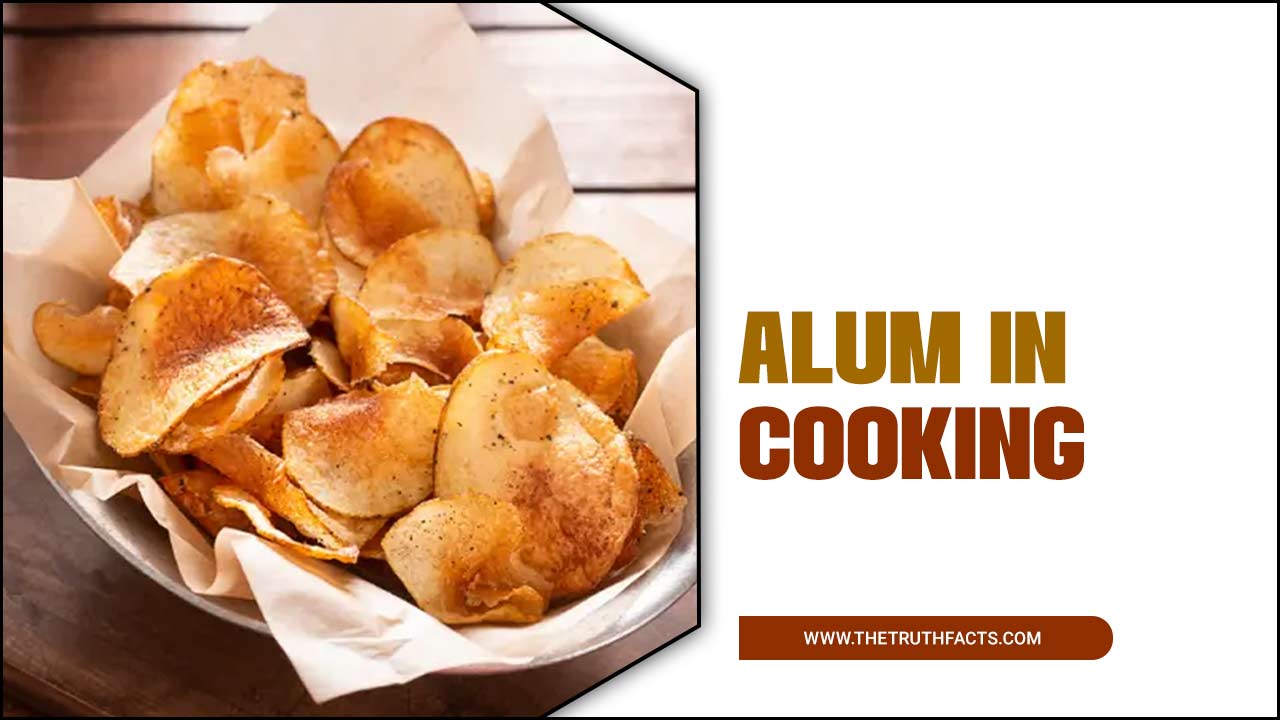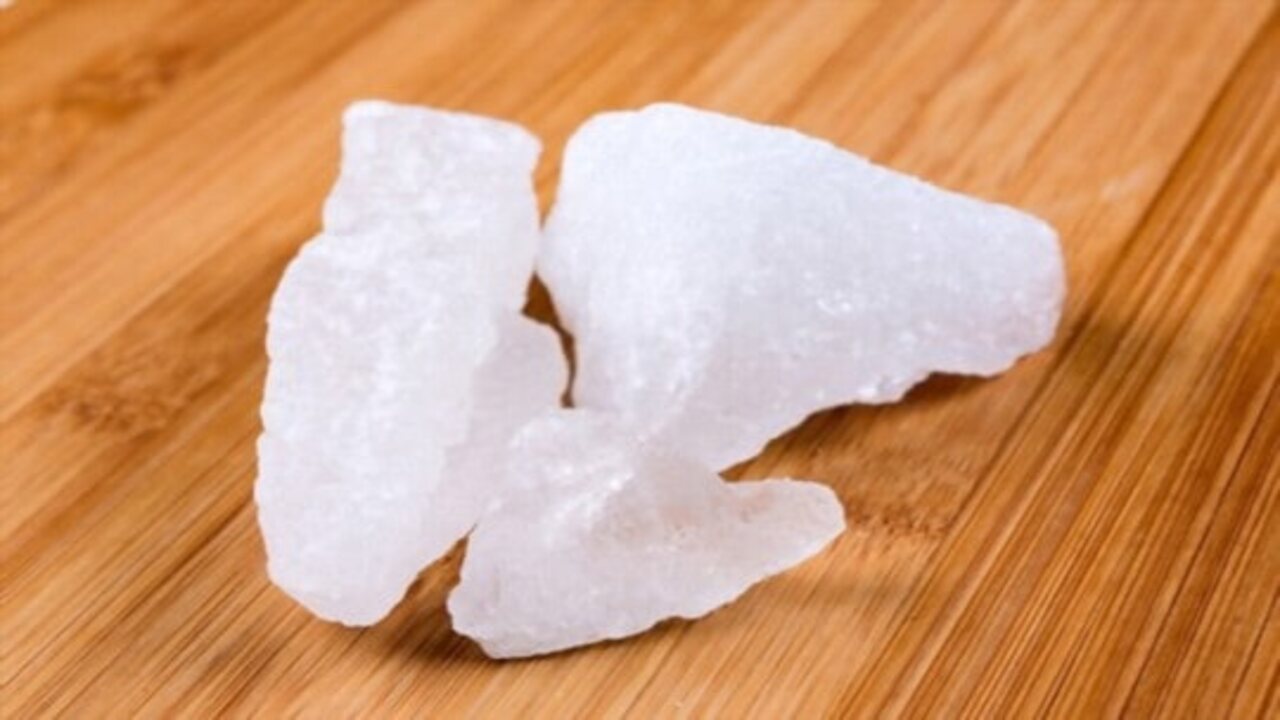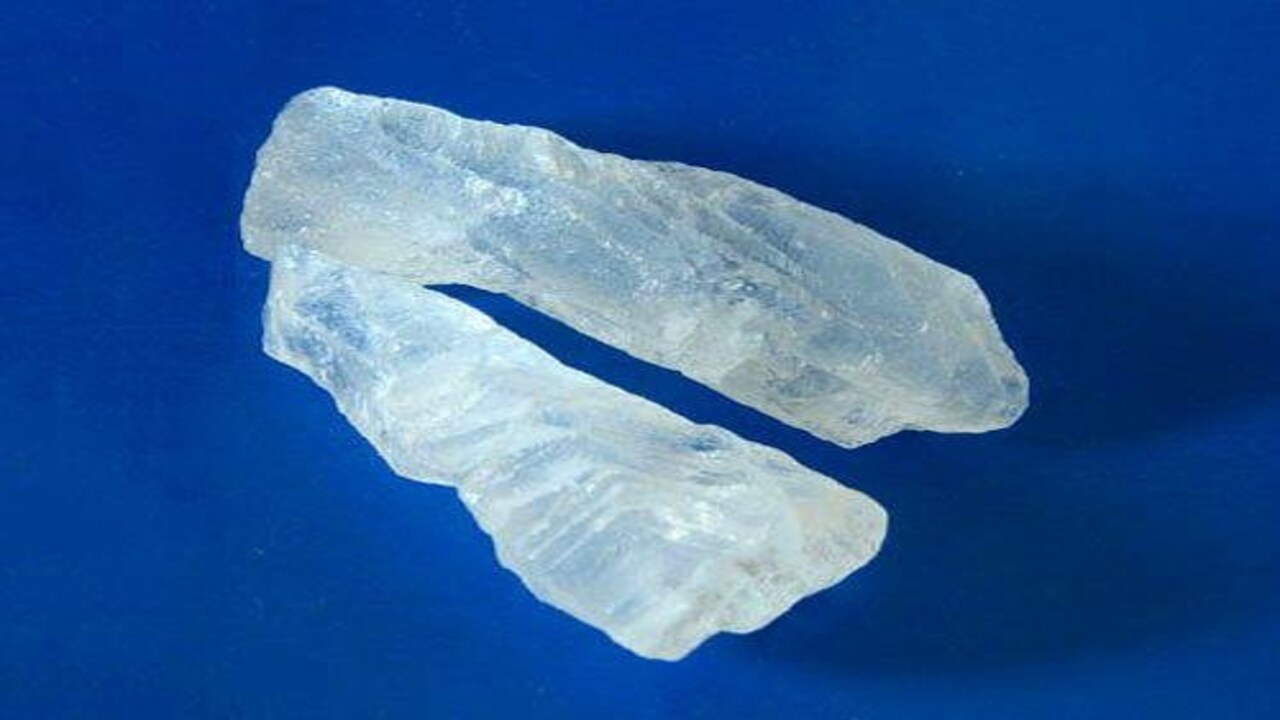Cooking is an art, and like any artist, a cook must-have tools and techniques to create delicious and visually appealing dishes. One such tool that is often overlooked is an alum.
Alum is a food additive that has been handy for centuries to enhance the flavor and texture of a variety of foods. It is commonly used in pickling, baking, and cheese-making to give these items a unique taste and texture. Despite its numerous benefits, many people are unaware of the role that alum can play in culinary creations.
We will explore using alum in cooking and how it can enhance the flavor and texture of various dishes. However, we will look at the properties of alum, how to use it, and what kinds of dishes it works best with. We will also discuss safety precautions when working with alum, as it is a chemical that should be handled carefully.

Different Types Of Alum And Their Composition

Alum is a versatile ingredient that has been used in cooking for centuries. There are different types of alum, each with its own composition and culinary uses. The most common alum used in cooking is potassium alum or potash alum. Potassium sulfate and aluminum sulfate compose this type of alum.
It is often handy as a firming agent for pickles and vegetables, as it helps to maintain their crispness. They make ammonium alum by combining ammonium sulfate and aluminum sulfate. Bakers commonly use this type of alum in baking powder to create a light and fluffy texture in baked goods.
Other types of alum include soda alum and chrome alum, which have unique compositions and cooking applications. Understanding the different types of alum and their compositions can help you make informed decisions when using this ingredient in your culinary creations.
Exploring The Benefits Of Alum In Cooking

Alum is a commonly used ingredient in cooking, and it offers several benefits that can enhance your culinary creations. One of the main advantages of using alum in cooking is its ability to act as a natural preservative. It helps to prevent the growth of bacteria and fungi, which can extend the shelf life of certain foods.
Alum can also help improve the texture and crispness of certain fruits and vegetables when used as a firming agent. For example, it can be handy in pickling recipes to ensure that cucumbers retain their crunchiness.
However, it is important to note that alum should be handy sparingly and cautiously, as excessive consumption can have negative health effects. As with any ingredient, following recipes and recommended usage guidelines is always best when incorporating alum.
The Role Of Alum In Enhancing Flavor And Texture In Food
People commonly use alum as an ingredient in cooking to enhance the flavor and texture of food. Its unique properties make it an effective ingredient in pickling, as it helps to crisp up vegetables and fruits while adding a tangy taste. You can also use alum as a tenderizer for meat.
It helps break down tough fibres, making the meat tender and juicy. Additionally, alum is often handy in baking to create a crumbly texture in cookies and pastries. However, it is important to note that alum should be handy sparingly, as excessive consumption can have negative health effects. As with any ingredient, it is always best to use alum in moderation and consult a healthcare professional if you have any concerns.
Alum As A Flavor Enhancer: How Does It Work?

People commonly use alum in cooking, particularly pickling and baking. But have you ever wondered how alum enhances the flavor of your dishes? Alum, also known as potassium aluminum sulfate, is a flavor enhancer. When added to certain foods, such as pickles or fruits, alum can help to enhance their natural flavors and make them more pronounced.
It does this by activating taste receptors on our tongues, intensifying the perception of flavors. Additionally, alum has a slightly acidic taste that can add a tangy note to dishes. So next time you want to elevate the flavors in your cooking, consider adding a pinch of alum to your recipe and experience the difference it can make.
Alum’s Effects On Food Texture
People commonly use alum in cooking, especially pickling and baking. When it comes to food texture, alum can have a significant impact. People often use alum in pickling to increase the firmness of vegetables and make them crispy.
Tightening the cell walls of the vegetables helps them retain their crunchiness even after being soaked in brine. Alum can also be handy in baking to help create a lighter and fluffier texture in cakes and cookies.
By interfering with protein structure, it can strengthen the gluten network and improve the overall structure of baked goods. However, it’s important to note that while alum can enhance texture, it should be handy sparingly, as excessive amounts can lead to an unpleasant metallic taste.
Alum In Different Cuisines
Alum, also popular as potassium aluminum sulfate, is a commonly handy ingredient in various cuisines worldwide. Its unique properties make it versatile and useful in different cooking techniques and recipes. People often use alum as a firming agent in Indian cuisine for pickles and chutneys to help maintain their crisp texture.
In Chinese cuisine, it is handy as a tenderizer for meat, making it more tender and juicy. Middle Eastern and Mediterranean cuisines use alum to preserve fruits and vegetables. It’s important to note that while alum can enhance the flavors and textures of dishes, it should be handy in moderation due to its potential health risks when consumed in large quantities. When using alum, one should always follow trusted recipes and guidelines.
Health Considerations: Is Alum Safe For Cooking?

When cooking, it’s important to consider the health implications of our ingredients. Alum, a common ingredient in pickling and some baking recipes, is often a topic of concern. Alum is a type of chemical compound that is handy as a food additive for its ability to preserve and enhance the texture of certain foods.
However, there is some debate about whether alum is safe for consumption. While the FDA has approved certain forms of alum for use in food, there are potential health risks associated with its consumption, particularly when used in large amounts or over a prolonged period of time.
Some studies have linked excessive alum intake to negative kidney and nervous system effects. As with any ingredient, it’s always best to exercise caution and moderation when using alum. If you have concerns about its safety, it may be wise to seek advice from a healthcare professional or opt for alternative ingredients in your recipes.
How To Store Alum For Cooking Purposes?

Storing alum for cooking purposes is relatively easy and straightforward. Keeping alum in a cool, dry place away from direct sunlight is important. Moisture can cause the alum to clump together or degrade over time, so storing it in an airtight container or resealable bag is best.
Also, clearly label the container or bag to avoid confusion with other ingredients. With proper storage, alum can maintain its quality and effectiveness for an extended period, allowing you to continue using it in your culinary endeavors.
Are There Alternatives To Using Alum In Cooking?
People have long used alum as a common ingredient in cooking, particularly for pickling and preserving fruits and vegetables. However, some individuals may want to explore alternatives to using alum in cooking. One option is to use alternative natural preservatives, such as vinegar or lemon juice, to help maintain the acidity levels necessary for proper preservation.
Another alternative is to use calcium chloride, which can help retain the crispness of pickled items without the need for alum. Additionally, exploring different pickling methods, such as lacto-fermentation or refrigeration, can provide alternative ways to preserve food without relying on alum. Ultimately, it’s important to experiment with different techniques and ingredients to find what works best for your specific cooking needs.
Conclusion
alum is a versatile ingredient that can greatly enhance the flavor and texture of various dishes. Whether adding a tangy kick to pickles or improving the crispiness of fried foods, alum has proven to be a valuable tool in the kitchen. However, it’s important to note that while alum is generally considered safe for cooking purposes, excessive consumption should be avoided.
Additionally, if you prefer to avoid alum, alternative methods and ingredients can achieve similar results. Incorporating alum into your cooking can elevate your culinary creations and take your dishes to the next level of deliciousness.
Frequently Asked Questions
1.Is Alum Safe For Food?
Ans: Generally, people consider alum safe for food use, but they should use it in small quantities and avoid consuming it in large amounts. It’s important to note that some individuals may have allergic reactions to alum, so it’s best to use it cautiously. If you have any concerns, consult a healthcare professional.
2.What Does Alum Spice Taste Like?
Ans: Alum spice has a mild and slightly tangy flavor, often described as slightly metallic or sour. Its primary use is texture rather than taste, so it should be handy sparingly to avoid overpowering other ingredients.
3.Is Alum The Same As Baking Soda?
Ans: No, alum is not the same as baking soda. Alum and baking soda both have culinary uses, but alum is a chemical compound that is used in pickling and preserving food, while baking soda is used as a leavening agent for baking. They differ in composition and purpose.
4.What Is Alum Made Out Of?
Ans: Potassium aluminum sulfate or ammonium aluminum sulfate compose alum. People have used this naturally occurring compound for centuries in cooking and food preservation. People renowned it for enhancing the texture and crispness of pickles and preserved foods. However, it should be handy sparingly due to potential negative health effects.
5.What Are Some Common Uses Of Alum In Cooking?
Ans: Alum in cooking has various common uses. It is handy as a pickling agent for crispness, baking for meringues and whipped cream stability, and retaining vibrant colors when boiling vegetables. Cheese-makers even use alum to improve texture and coagulation.
